From here
Data consistency
Execution of transaction in isolation preserves the consistency of the data. The data value stored in the database must satisfy certain consistency constraints. For example the balance on an account should not fall below $100. The DDL commands provide the facilities to specify such constraints. The database systems check these constraints every- time the database is updated. In general it can be an arbitrary predicate pertaining to the database. To check the consistency of database most of programmer depends on the constraints and these are usually costly to test.
Data integrity
The integrity of data refers to as "whole data at one place". The data is in the form of tables and each table has some attributes. These are the cases where we wish to ensure that a value that appears in one relation for given set of attributes should also appear for a certain set of attributes in another relation (referential integrity). Database modification can cause violation of integrity. When the integrity constraint is violated, the normal procedure rejects the action that has actually caused the violation.

You can read first chapter for ACID.
